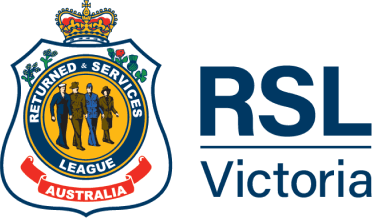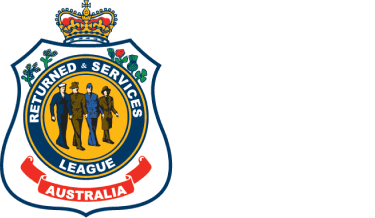Photos: The Australian Defence Force
Flying through the air at speeds of up to 685km/h to perform a jaw-dropping manoeuvre. Scaling a 30 metre tower to secure a crucial communication lifeline.
Or, leading a team that’s charged with educating the next generation of sailors.
This small snapshot of three Australian Defence Force careers captures all the excitement one would expect from signing up for a life of service. But it’s more than just adrenaline that’s driving young Australians to become sailors, soldiers and air force personnel. Mufti spoke to members of the Australian Army, Royal Australian Air Force and the Navy to gain an insight into the life of modern service men and women.
Meet Jackson
“In the grand scheme of things, I’m a bit like the Telstra guy,” Corporal Jackson Hill jokes when describing his job to a civilian. He crafts his words carefully and not just because of the highly technical nature of his work, but due to the sensitivities it entails. CPL Hill is a Telecommunication Network Engineer— a modern day signaller in the Australian Army.
Few can forget the stories of signallers in World War 1 putting their life at risk to lay down lines for telephones in fields in France, or images of soldiers sitting in dugouts with clunky, but crucial, equipment. It’s hard to believe that messenger pigeons, Morse Code, telegrams and dispatch riders on bikes were once the fastest and safest way to share sensitive or time critical information.
Signallers continue to play an important role in battle. After all, tracking your troops, knowing where your enemy is and communicating with allies are fundamental to effective warfare. The rise of instant and secure communication revolutionised modern warfare from a tactical perspective, but it also helps troops communicate with loved ones. There are stories like the Australian soldier in Afghanistan being by his wife’s side —virtually—via Skype, while she gave birth to their baby in a Townsville hospital. Whilst occasions like these make newspaper headlines, few column inches are devoted to the modern signaller's mainstay: keeping the Army connected. This can involve using: radio, fibre optics, microwave, information systems and satellite links.
“We build and maintain the backbone infrastructure for data and voice communication during battle,” CPL Hill explains.
To succeed as a signaller, you need technical skill and street smarts, which is what attracted CPL Hill to the trade when he was 17.
“It seemed like a good way to keep me on the straight and narrow,” he said.
Within six months of joining the Army, the proud Indigenous man from the Kamilaroi mob in Brisbane was undertaking military training in Kapooka, NSW. Once he mastered his trade during training, he travelled to the Middle East as part of the Theatre Communications Group. When communications equipment and infrastructure was required, the team would fly in.
“We ran physical cables, installed ports on walls and connected computers, which can include climbing towers to inspect or maintain satellite dishes and antennas.”
CPL Hill is currently an instructor at Defence Force School of Signals in Melbourne.
Lifelong learning is essential to keeping up with technological advances in military equipment.
“Science underpins everything we do, which is why we spend 18 months studying.”
He said the was one important aspect of being the Army that hadn’t changed.
"The camaraderie is huge, especially within our trade world: we are a ‘band of brothers’ working together to get the job done."
Corporal Jackson Hill
In addition to kicking goals in his trade, CPL Hill plays soccer, AFL and golf. His affection for Army life is so infectious that it’s now a family affair. Five years after he enlisted, his brother, Isaac, followed in his footsteps.
Meet Alisha
You could be forgiven for thinking that a Defence Force career was predestined for Commander Alisha Withers, a self-confessed “Navy brat.”
“My parents were in the Navy, however, I always resisted the thought of it,” CMDR Withers said. “When I was around 16 that I began to think about what I wanted to do with my life.”
A challenge? Travel the world? Work with great people? It turns out the Navy ticked all her boxes.
CMDR Withers has travelled extensively and worked as a: Maritime Warfare Officer, Fighter Controller, Principal Warfare Officer and Air Warfare Specialist. A highlight was commanding a patrol boat in Darwin.
“I was young and I had just been promoted to Lieutenant Commander and suddenly I was in command of my own vessel, I felt really unsure of myself- the classic imposter syndrome.”
"There was an incident and I had to react quickly. To my surprise, I had this moment of reckoning and I realised that I knew what I was doing, my training had prepared me."
Commander Alisha Withers
Like many modern sailors, she has amassed two degrees—a Bachelor of Science and a Masters in Military and Defence Studies. In December 2021, CMDR Withers became the Commanding Officer at the RAN Recruit School at HMAS Cerberus in Victoria.
“It’s my role to lead the staff who turn more than 1700 civilians into sailors every year,” she said. “I get to see the look of pride on their faces after they complete the intense course, it’s incredible, ” CMDR Withers said.
In her view, some of the biggest differences in the Navy today relate to training.
“The deep history of recruitment and training remains the same, we focus on basic military skills, such as: drills and marching, physical, weapons and seamanship training.”
"But at the same time, our strategic environment is changing rapidly and so the training system has to evolve to provide our fleet with the right people, at the right time with the right qualifications"
Commander Alisha Withers
Navy training is shorter and, in a first, there has been a shift towards blending face-to-face learning with online courses.
"We want sailors who live by the Defence values and maintain the standards, discipline and military skills, but who can also think independently"
Commander Alisha Withers
“The vast majority of our recruits are young and they are tech savvy. Their speed of relevance is very different to 30 years ago and we want our training systems to capitalise on their strengths.”
Junior recruits, where 15-16 year olds enlisted, no longer exists, and there is a minimum standard of education.
“In addition to recruits straight out of high school we also attract university educated adults and career changers, who are keen to shake things up after decades in a different profession,” CMDR Withers said.
Meet Ben
Flight Lieutenant Ben Price was an electrician running his own business when he decided to pursue his dream job.
“I’d always wanted to be a pilot, but didn’t think I had the right marks or subjects.”
He threw caution to the wind and applied to the RAAF. To his delight, he had an aptitude for high altitude. He worked hard through officer training, basic flight training school (BFTS), a course flying a CT 4 (a small piston engine propeller aircraft) before learning to fly a PC-9/A (a turbo propeller aircraft).
"I remember my BFTS instructor said something to me like: ‘you’ve been driving a Datsun 180 and you're about to step into a Ferrari."
Flight Lieutenant Ben Price
Pilots are known for their cool, calm demeanour. FLTLT Price said it all comes back to the fundamental principles of flying: aviate-navigate-communicate-administrate. Unlike regular pilots, their work is highly variable— missions include covert surveillance, combat or transporting troops and supplies.
When military aviation first came of age in World War, aircrafts were mostly used for reconnaissance missions. In World War Two, air and ground crews fought and almost 10,000 Air Force lives were lost between1939-45. Since then, around 60 Air Force personnel died in conflict or in accidents during operations. Currently, RAAF plays a major role in peacekeeping and humanitarian missions and contributes to coalition operations.
For FLTLT Price, his first operational posting was in a KC-30A, which conducts air-to-air refueling of fighter jets and various heavy aircraft. “I did a deployment in the Middle East where we were flying over Iraq and Syria, I’ve also been on multiple flights around the world.”
Recently, FLTLT Price’s career took a very different turn. He was given the chance to join the elite aerobatic display team, the Roulettes, who showcase Air Force pilot’s incredible flying skills. The Roulettes, based at the Central Flying School (CFS) at RAAF Base East Sale, use the most advanced training aircraft in the world, the Pilatus PC-21. Since they formed 50 years ago, major technological advances in the aviation industry have resulted in three aircraft changes.
As the seventh member of the Roulette’s, FLTLT Price takes care of administration and media engagement, while he clocks up miles in the air and earns his stripes flying the PC-21 across Australia.
"When I was an electrician I used to spend Sunday dreading going to work on Monday, as a pilot every day is different."
Flight Lieutenant Ben Price

